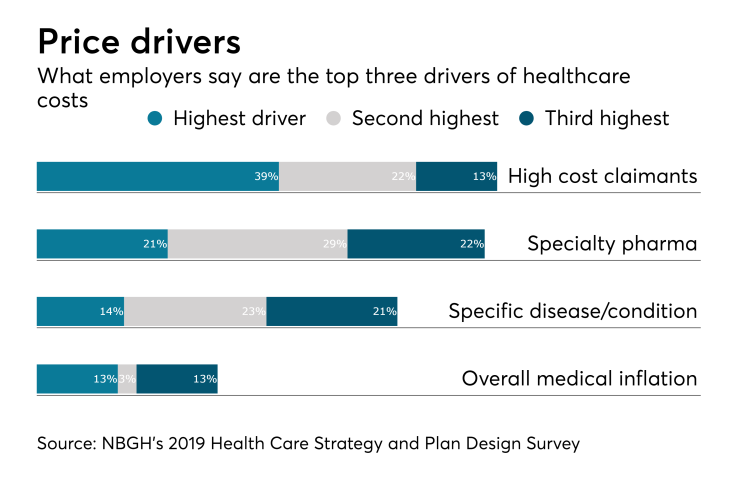Faced with crippling insurance premium hikes, the city of Arvada, Colorado, made a big decision to restructure its benefit offerings to be self-insured.
The city has over 700 employees, with a large portion suffering from age-related chronic diseases, according to Arvada City Manager Mark Deven. When Deven started his tenure as city manager in 2011, the city’s health insurance wanted to raise premiums by 20% because of these pre-existing conditions. While he was able to negotiate the rate down to 12%, the number of employee claims still cost the city a significant amount of money.
“We were getting double digit increases every year, but by becoming self-funded we were able to take control of our plan,” Deven says. “We challenged ourselves to reduce our annual increases to somewhere around 4-6 %, and we definitely beat it.”
Under a self-funded health plan, an employer pays out of pocket for its workforce’s healthcare coverage. While the system puts employers — instead of insurance companies — in control of coverage, it requires a steady cash flow to be successful. For this reason, the practice isn’t too common, but Bryan Archer, Arvada’s director of finance, said that could change given their city’s success with the system.
Third party administrator HUB International suggested the city contract with Paladina Health — a low-cost primary care clinic. Under this partnership, Arvada employees and their dependents receive care from an exclusive, on-site wellness clinic. Since most primary care doctors are paid based on the number of patients they enroll, Paladina is a cheaper alternative because it doesn’t follow this model.
Employees don’t have copays under this health plan. Arvada pays monthly membership fees to enroll its workforce in Paladina — $99 per employee and $59 for each dependent. Around 20% of each employee’s paycheck is deducted to cover the rest, depending on their plan.

“We fund the plan out of what the city historically contributed to healthcare,” Archer says. “Instead of putting the money in a full coverage plan, we moved it into a medical trust. Employees and the city help pay for it.”
The city’s Paladina clinic, located near City Hall, is staffed with a doctor, two registered nurses and a few medical assistants. Deven says employees are getting higher quality care at Paladina because the clinic only serves Arvada employees and their families.
“The care is highly personalized. Not only do employees get really great treatment, doctors will call patients back to let them know what test results were and counsel them on chronic conditions,” Deven says.
Although it operates on a small scale, Haley says the clinic offers the same services as any other primary care provider. It’s also equipped with a pharmacy that’s stocked with common medications their workforce needs.
“In cases where an outside specialist is needed, they coordinate to find the best option with the best price,” Haley says. “They’ll work with those specialists to share data so tests, like X-rays, don’t get repeated. It helps save us money.”
When Arvada opened its Paladina clinic in 2014, the city’s annual insurance premium increase was 5.5%. The following year they achieved a 0% increase. Since then, the city has wavered between single-digit and zero premium increases; this year’s rate increased by 2%. The city places its healthcare savings in a medical trust to fund the program, but they may consider using excess monies for employee wellness programs in the future, Devan said.
Arvada was one of the first employers to contract with Paladina to provide a self-funding healthcare system, Devan said. Other Colorado cities have reached out to him to learn more about the healthcare model, and some are considering adopting it for themselves after seeing Arvada’s savings.
“Not only are we saving financially, our stats of all our chronic concerns are coming down. We’re kind of experiencing the best part of it now. We just want to close our eyes and keep going,” Haley says.
Haley says the management team meets quarterly with clinic staff to determine the effectiveness of the program. The physician refers to collective data to maintain patient privacy, while giving the city a snapshot of employee health.
“We don’t know who has the condition, but we know a lot of people have hypertension. So we structure our wellness education around relieving stress and managing the condition,” says Gabriella Bommer, Arvada’s deputy director of human resources.
“One of my favorite data points of ours is that employees who have three or more chronic conditions are the ones who are the most involved with their health,” she says.
Deven estimates 70% of the city’s employees are enrolled in this plan. The remaining 30% are still covered through the city’s health insurance.
“We suspect they haven’t switched over because they already have a strong relationship with a physician,” Devan says.





